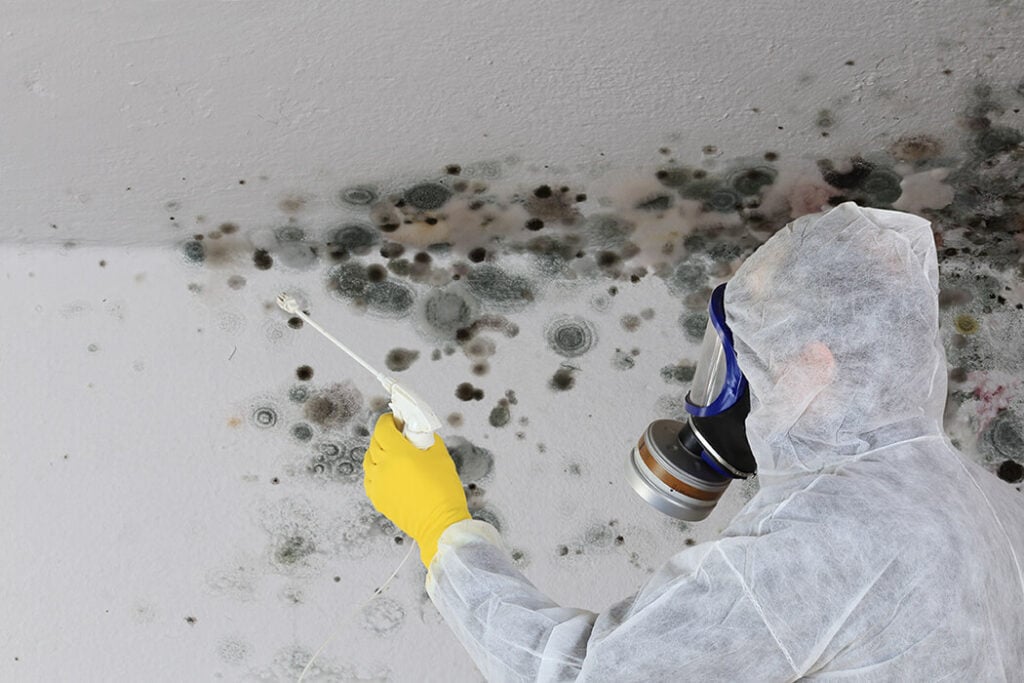In the shadowy corners of our homes, a notorious villain lurks, cloaked in an unsettling darkness: black mold. Its very mention evokes a sense of dread, conjuring images of decay and illness that many believe could be lurking just behind the walls.
But is black mold truly the insidious enemy it’s made out to be, or is it merely a misunderstood inhabitant of our living spaces? As homeowners and renters alike grapple with the implications of mold in their homes, the need for clear, accurate identification becomes paramount. In this exploration, we will delve into the telltale signs of black mold, separate fact from fiction, and arm you with knowledge to combat this alleged boogeyman.
So, pull back the curtain on those murky fears—lets discover what lies beneath the surface.
The Science Behind Mold: What Makes Black Mold Unique?

Black mold, scientifically known as Stachybotrys chartarum, is not just another type of fungus; it stands apart due to its unique biochemical characteristics and environmental preferences. This notorious mold thrives in damp, cellulose-rich environments such as water-damaged buildings, and can often be identified by its dark greenish-black color and musty odor.
Its spores, which are released into the air when disturbed, possess a potent cocktail of mycotoxins—a feature that elevates concerns about potential health risks, particularly for vulnerable populations. Unlike other molds, black molds ability to produce these harmful substances sets it on a different playing field, igniting fears that can turn a simple leak into a full-blown crisis.
Understanding these unique traits is crucial for anyone delving into the world of mold identification and management.
Health Risks Associated with Black Mold Exposure

Health risks associated with black mold exposure can be a serious concern, particularly for vulnerable populations such as infants, the elderly, and individuals with pre-existing respiratory issues. This insidious fungus, often found lurking in damp, poorly ventilated spaces, releases mycotoxins that can trigger a host of adverse health effects.
Symptoms may range from mild irritations, like sneezing and skin rashes, to more severe reactions, such as chronic coughing, difficulty breathing, and persistent fatigue. In some cases, prolonged exposure could lead to serious conditions like asthma or other lung diseases.
The potential for these health risks paints a daunting picture, prompting homeowners to take mold seriously—not just as an unsightly nuisance, but as a hidden menace that could compromise the well-being of their families.
Prevention Strategies: Keeping Your Home Mold-Free

To effectively keep your home mold-free, it’s essential to adopt a multifaceted approach that tackles both moisture control and ventilation. Begin by regularly inspecting areas prone to dampness, such as bathrooms, kitchens, and basements, and swiftly address any leaks or water damage.
Using dehumidifiers can significantly reduce humidity levels, especially in humid climates or during the rainy season. Adequate ventilation is equally crucial; ensure that areas like attics and crawl spaces are well-aerated with the help of exhaust fans and open windows.
Additionally, when cleaning, use mold-resistant products and maintain a clean environment to deter spores from taking root. Implementing these strategies creates a barrier against the dreaded black mold while promoting a healthy, comfortable living space.
Your home should be a sanctuary, not a breeding ground for unwelcome guests!
Conclusion
In conclusion, while black mold often evokes fear and anxiety, it is important to approach the subject with a balanced perspective. Not all mold is dangerous, and proper identification is key in determining the actual risk it may pose to health and property.
Homeowners should not dismiss the potential presence of black mold; however, they should also seek to understand the conditions that contribute to mold growth and the significance of effective remediation. For those in the Tampa area, professional mold testing Tampa can provide valuable insights and peace of mind, helping to distinguish between myth and reality in mold issues. By staying informed and proactive, individuals can protect their homes and health without succumbing to unnecessary panic.


